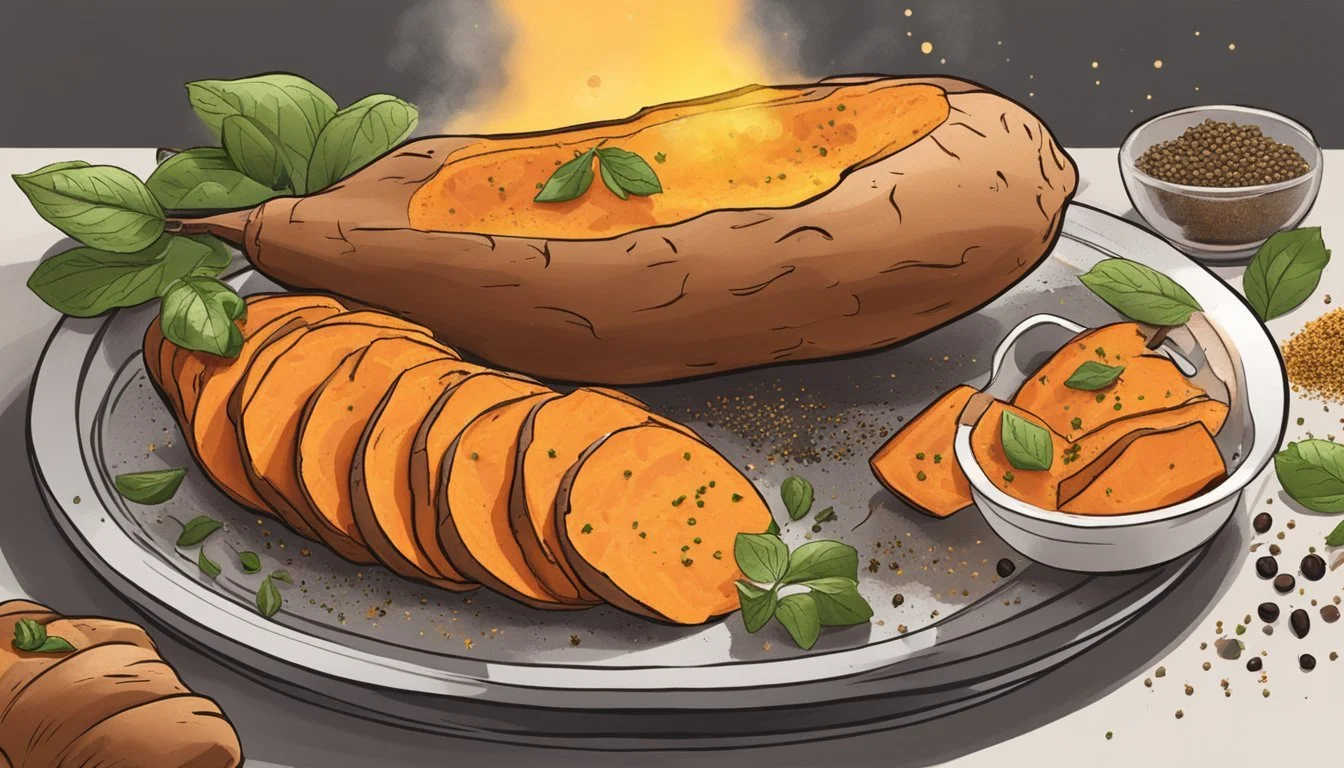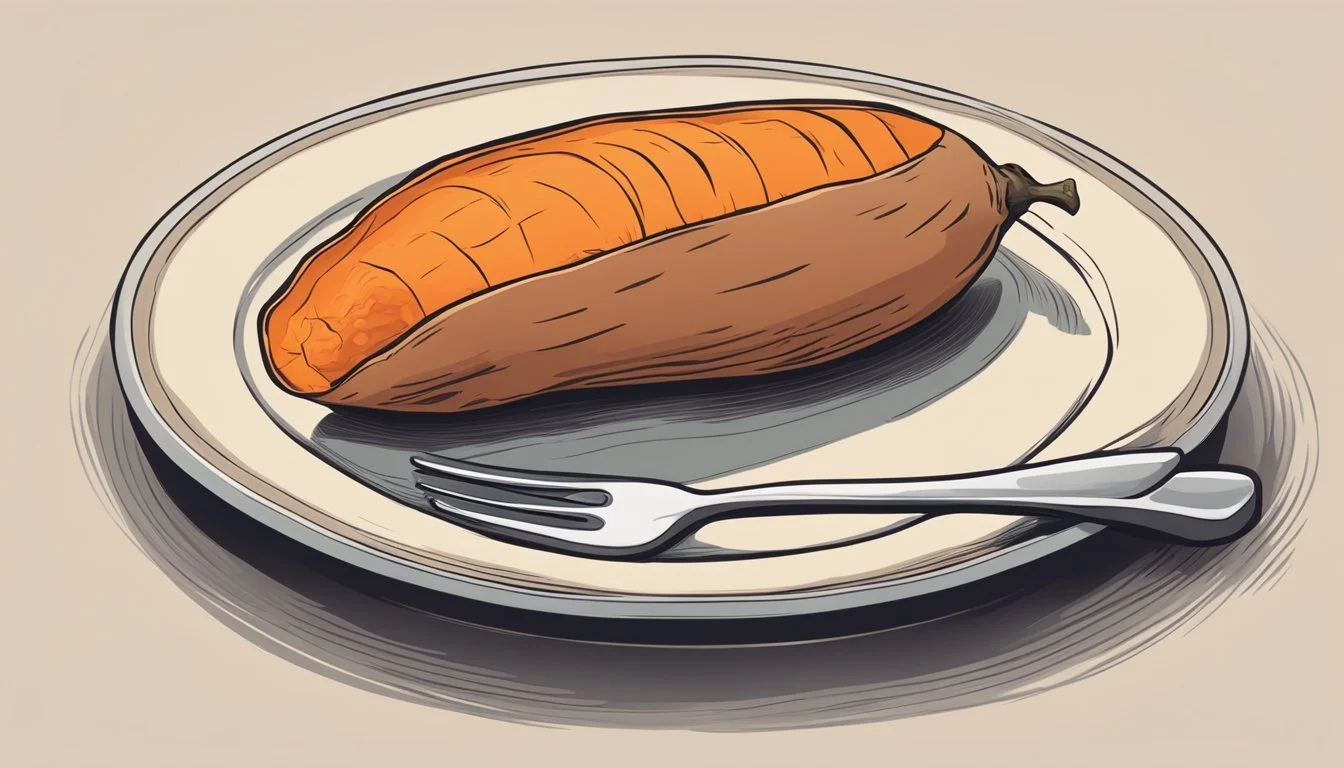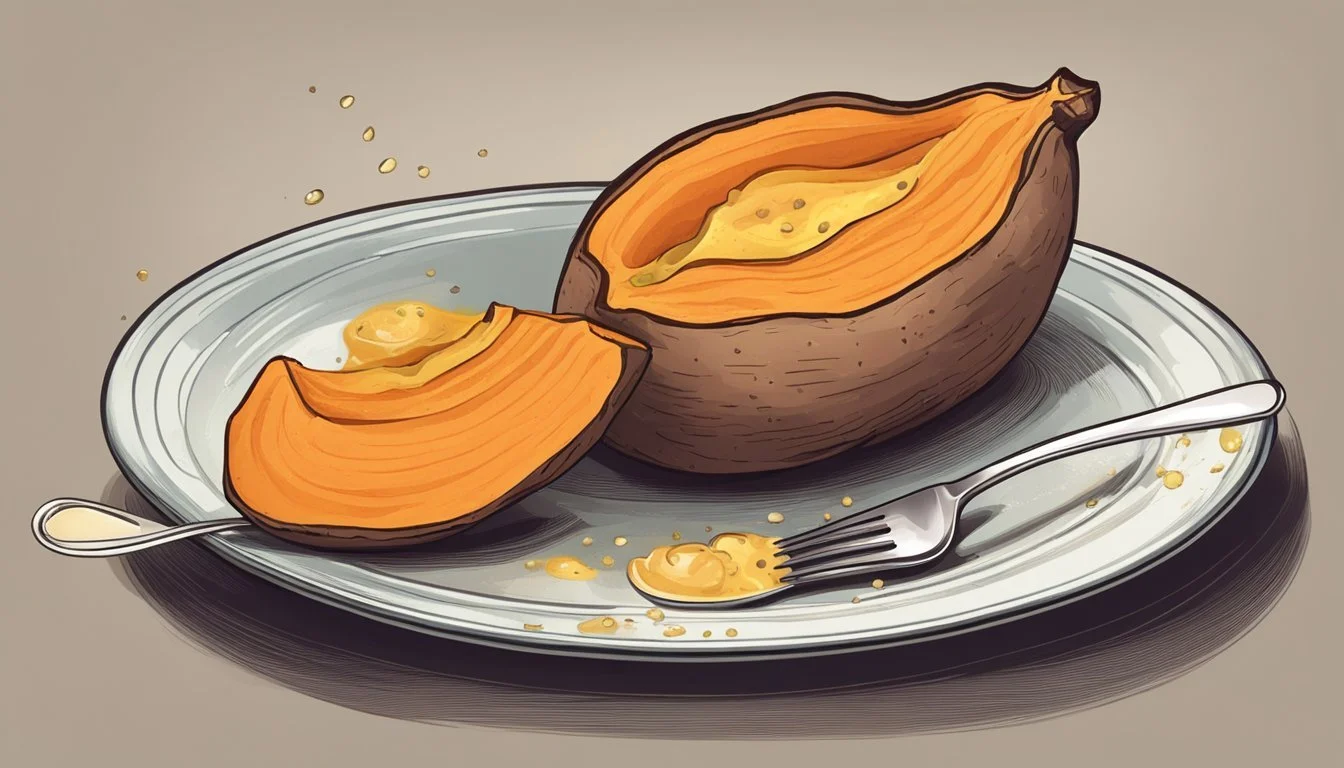How Do You Eat a Sweet Potato?
Simple Ways to Enjoy This Nutritious Vegetable
Sweet potatoes (What wine goes well with sweet potatoes?) are a versatile and nutritious root vegetable gaining popularity for their health benefits and variety of preparation methods. They are not only a great source of fiber, vitamins, and minerals but also provide a natural sweetness that can complement both savory and sweet dishes. Their rich beta-carotene content, which the body can convert into vitamin A, contributes to their vibrant orange color, although they can also come in purple, red, and white varieties.
Eating sweet potatoes is simple and can be tailored to personal preference and dietary needs. They can be consumed in multiple forms, including baked, mashed, roasted, or as part of a breakfast hash. The process begins with a thorough wash and scrub, after which they can be cooked whole or cut into pieces, depending on the recipe. Their natural sweetness pairs well with a variety of flavors, from the peppery taste of arugula in a salad to the savory aspect of a ham breakfast hash. Sweet potatoes can also be a meal by themselves, making them a staple for a nutritious diet.
Incorporating sweet potatoes into meals is effortless and beneficial, as evidenced by their use in quick, balanced recipes fit for hectic mornings or elaborate dishes for special occasions. They offer flexibility in culinary applications while contributing valuable nutrients to one's diet. Whether as a main ingredient or a delightful side, sweet potatoes can enhance the nutritional quality of meals while satisfying diverse taste preferences.
Sweet Potato Basics
Sweet potatoes are a versatile and nutrient-dense food, suitable for a variety of culinary applications. They come in different types, each with a distinct taste and appearance, and offer an impressive nutritional profile that can contribute to a balanced diet.
Types of Sweet Potatoes
Sweet potatoes are available in several varieties that can range in color from white and yellow to orange and purple. The orange variety is rich in beta-carotene, which the body converts into vitamin A. Purple sweet potatoes are known for their concentration of anthocyanins, which are powerful antioxidants. The most commonly recognized are the Beauregard and Jewel cultivars, boasting a sweet flavor and moist texture.
Nutritional Profile
A standard 3.5-ounce serving of baked sweet potato contains approximately 90 calories. They are an excellent source of fiber, providing about 3.3 grams per serving, which aids in digestion and promotes a feeling of fullness. Sweet potatoes are particularly high in vitamins including Vitamin A, with a serving offering over 300% of the daily value, essential for immune system function and vision. They also supply a significant amount of Vitamin C, important for skin health and immune function, along with potassium, which is vital for heart and muscle function. Additionally, sweet potatoes contribute to the body's intake of Vitamin B6, manganese, iron, and other carotenoids beyond beta-carotene.
Preparation and Storage
Proper preparation and storage of sweet potatoes maximize their shelf life and flavor. They should be washed and peeled with care, cut using the right techniques, and stored under conditions that maintain their freshness.
Washing and Peeling
Before peeling, sweet potatoes should be thoroughly washed to remove dirt. One should use a brush to scrub their surface while rinsing under running water. After cleaning, a paring knife or vegetable peeler can be utilized to peel the skin off. They should be peeled as close to cooking time as possible to prevent discoloration.
Cutting Techniques
For cutting sweet potatoes, one should use a sharp knife on a stable counter to create even slices or cubes. Even pieces ensure uniform cooking. A knife suited for cutting firm vegetables, like a sturdy chef's knife, will give the best results. The cut sweet potatoes can be arranged on a baking sheet lined with aluminum foil if they are to be roasted immediately.
Storage Guidelines
To store sweet potatoes:
Short-term Storage:
Keep them in a cool, dry, dark place.
Ideal temperature range is between 50 and 60 degrees Fahrenheit.
Do not refrigerate, as cold temperatures can alter taste and texture.
Long-term Storage:
Sweet potatoes can be frozen. After boiling or baking, let them cool, peel and cut into pieces if desired.
Place in a single layer on a parchment-lined baking sheet and freeze.
Transfer frozen pieces to a zip-close freezer bag, and label with the date.
Sweet potatoes should not be stored near appliances that emit heat or at room temperature if the climate is warm. The storage area should be ventilated to prevent moisture accumulation and decay.
Cooking Methods
Sweet potatoes can be transformed into a delicious dish using various cooking methods. Each technique brings out different textures and flavors from the sweet potato, making it a versatile ingredient in many recipes.
Baking Sweet Potatoes
Baking is a straightforward method that involves heating the oven to around 350 degrees F. One begins by washing the sweet potatoes, lining a baking sheet with aluminum foil, and piercing the skins to allow steam to escape. They typically bake for about an hour, depending on their size, until tender.
Boiling and Steaming
Sweet potatoes can be boiled or steamed to create a softer texture suitable for mashing. To boil, sweet potatoes are placed in a pot of water and brought to a boil until fork-tender. Alternatively, steaming involves placing them in a steamer basket over an inch of boiling water, which preserves more nutrients and avoids the mushiness sometimes caused by boiling.
Roasting
Roasting sweet potatoes in the oven or on a grill amplifies their natural sweetness. They are usually cut into chunks, tossed with oil and seasoning, and cooked at a higher temperature around 425 degrees F until they caramelize on the outside and become soft on the inside.
Frying and Air Frying
For a crispier texture, sweet potatoes can be fried or air-fried. Frying involves cooking them in hot oil until they're crispy and golden, whereas an air fryer uses circulated hot air to achieve similar results with less oil. Both methods require cutting the sweet potatoes into even-sized pieces for consistent cooking.
Microwave Cooking
When time is of the essence, microwaving sweet potatoes is a quick alternative. Puncturing the skin of the sweet potatoes allows steam to escape, and then they can be cooked on high power for approximately 5 to 8 minutes per potato. This method is optimal for those looking for a swift and efficient way to cook a sweet potato without using an oven.
Recipes and Dishes
Sweet potatoes are versatile and can be incorporated into numerous recipes ranging from traditional dishes to international cuisines, as well as encompassing breakfast, soups, salads, and desserts.
Classic Sweet Potato Dishes
Sweet potato casserole is a time-honored favorite, often featuring a sweet and crunchy pecan topping. For a more savory option, roasted sweet potatoes can serve as a simple yet delicious side dish that complements a variety of mains.
Casserole: A mixture of mashed sweet potatoes, sugar, butter, and spices, topped with pecans and marshmallows.
Roasted: Cubed sweet potatoes tossed with olive oil, salt, pepper, and optional spices, then roasted until golden.
International Sweet Potato Recipes
Internationally-inspired sweet potato dishes add a global twist to meals. Sweet potato curry offers a hearty and flavorful experience with its blend of spices and coconut milk.
Sweet Potato Curry: A blend of sweet potato chunks simmered in a rich sauce with curry powder, tomatoes, coconut milk, and chickpeas.
Sweet Potato Soups and Salads
For lighter fare, sweet potato soups and salads deliver both nutrition and taste. A creamy sweet potato soup can provide comfort on a chilly day, while adding roasted sweet potato chunks to salads brings a natural sweetness and satisfying texture.
Sweet Potato Soup: A smooth puree of sweet potatoes, stock, and cream, enhanced with nutmeg and cinnamon.
Salad: Greens topped with roasted sweet potato wedges, nuts, and a vinaigrette dressing.
Breakfast with Sweet Potatoes
Sweet potatoes can be a nutritious and flavorful addition to breakfast. They can be turned into hash or wedges as a healthier alternative to traditional white potato dishes.
Hash: Diced sweet potatoes pan-fried with onions, peppers, and optional breakfast meats or tofu.
Wedges: Sweet potato wedges baked and seasoned, served with a side of eggs or wrapped in a breakfast burrito.
Desserts and Baked Goods
Sweet potatoes are not only for savory dishes but also shine in desserts and baked goods. Their natural sweetness and creamy texture make them ideal for pies and even as a main ingredient in cake batters.
Pie: A velvety sweet potato filling inside a flaky pie crust, often spiced with cinnamon and nutmeg.
Baked Goods: Incorporate mashed sweet potatoes into cake or muffin batters for moisture and sweetness.
Enhancing Flavors
When eating a sweet potato, enhancing its flavor involves the careful addition of seasonings and the exploration of sweet and savory combinations to accentuate its natural sweetness.
Seasoning and Spices
One can greatly enhance the flavor profile of sweet potatoes by incorporating a variety of seasonings and spices. A sprinkle of salt and pepper is fundamental to amplify the natural flavors. To add warmth and complexity, one may consider smoked paprika or chili powder. Herbs such as rosemary or thyme lend a fragrant note, while a drizzle of olive oil can enhance the potato's creamy texture.
Essential seasonings:
Flavor boosters:
Smoked paprika
Chili powder
Cinnamon
Herbs:
Rosemary
Thyme
Sweet and Savory Combinations
Sweet potatoes balance sweet and savory flavors exceptionally well. To appeal to a sweet palate, one could add a drizzle of hot honey for a gentle heat, or incorporate dried fruit such as cranberries for a tart contrast. For a savory twist, a blend of lentils and olive oil adds a protein-packed dimension. Savory sweet potatoes are also complemented by chives (how long do chives last?) or nuts for a crunchy texture. A spoonful of butter can be used to meld these components smoothy.
Sweet additions:
Hot honey
Dried cranberries
Savory pairings:
Lentils
Crumbled feta or goat cheese
Textural contrasts:
Chopped chives
Toasted nuts (pecans, walnuts)
Harmonious fats:
Butter
Olive oil
Health and Dietary Considerations
When considering the health impact of eating sweet potatoes, it is important to assess their effects on blood sugar levels, digestive health, and the role their antioxidant properties may have in disease prevention. Sweet potatoes are nutrient-dense, offering a substantial amount of dietary fiber, vitamins, and other essential nutrients.
Glycemic Index and Diabetes
The glycemic index (GI) measures how a carbohydrate-containing food raises blood glucose. Sweet potatoes have a medium to high GI value; however, the exact number can vary based on the preparation method. For individuals managing diabetes, controlling portion size and cooking methods, such as boiling instead of baking, can result in a lower GI, which is more conducive to blood sugar management.
Fiber and Digestive Health
A serving of sweet potatoes delivers a considerable amount of dietary fiber, important for maintaining digestive health. Fiber aids in regular bowel movements and helps to maintain a healthy digestive tract. One medium sweet potato contains about 4 grams of fiber, contributing to the recommended daily intake and supporting the digestive system.
Antioxidants and Disease Prevention
Sweet potatoes are rich in antioxidants, specifically beta-carotene, which the body converts into vitamin A. This nutrient is vital for maintaining healthy vision and immune function. Regular consumption of foods high in antioxidants, such as sweet potatoes, may contribute to the prevention of various diseases by mitigating oxidative stress and inflammation. Antioxidants from sweet potatoes may play a role in reducing the risk of chronic conditions like cardiovascular disease and may also offer anti-tumor benefits.
Serving and Presentation
When it comes to sweet potatoes, presentation can substantially enhance the dining experience. By focusing on plating techniques and pairing with main courses, one can elevate the humble sweet potato to a culinary delight.
Plating Techniques
For baked sweet potatoes, a clean cut with a knife down the center allows the steam to escape and creates a natural presentation pocket for toppings. The texture of baked sweet potatoes is soft and fluffy, making them ideal for serving whole on a plate with a fork on the side. Mashed sweet potatoes benefit from being scooped neatly onto a plate or a bowl, creating smooth, enticing swirls that highlight their creamy texture. Japanese sweet potatoes, which are often denser and sweeter, can be sliced into rounds and fanned out on a dish for a visually appealing side.
Pairing with Main Courses
Sweet potatoes are versatile and can be incorporated into any meal. For breakfast, sweet potatoes can be diced into a hash and served alongside eggs. For lunch, a sweet potato, lentil, and arugula salad provides a balance of flavors and nutrients. At dinner, a sweet potato mash pairs exquisitely with roasted meats (What wine goes well with roasted meats?), offering a sweet counterpoint to savory dishes. During Thanksgiving, a baked sweet potato is a traditional complement to turkey, though they can be creatively included in other holiday dishes to add color and a hint of sweetness.






